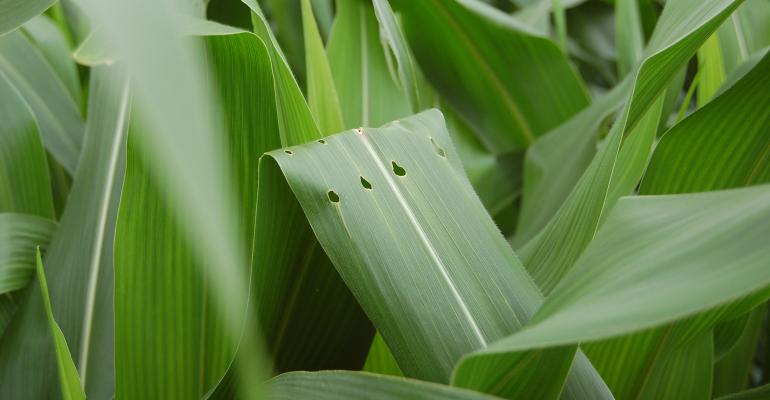Insect control without traited hybridds

Corn Pest Beat: Saving on seed costs may mean altering scouting and insect control strategies.
Nov 27, 2018
I’m going with non-GMO corn to save money. What should I do about insect control? I don’t have application equipment on my planter right now.
The Indiana certified crop advisers answering this question include: Andy Like, sales representative with Syngenta, Vincennes; Jeff Nagel, agronomist with Ceres Solutions, Lafayette; and Darrell Shemwell, agronomist with Posey County Co-op, Poseyville.
Like: Insect control measures depend on what level of insect pressure you expect. In Indiana, you could potentially have significant yield loss from corn borer anywhere. However, corn rootworm pressure would be more regional. If you’re not familiar with your pest pressure, speak with your local CCA to see what kind of risk you’re facing planting non-GMO corn.
Nagel: Decide how to approach above- and belowground insect pests.
For belowground pests: Overall, corn rootworm levels remain lower than normal, but we had a few areas of damage in 2018. Don’t overlook this insect. If you plant corn on corn, or farm where rootworm historically can be a problem, develop a strategy. A high-rate, seed-applied insecticide treatment like Poncho 1250 would offer protection on low to moderate populations. For moderate to higher populations, a soil-applied insecticide would offer better protection.
Granular insecticides like Aztec and Force can be applied through the SmartBox system. Counter and Lorsban are good but can limit some post-herbicide options. Capture LFR and Ethos XB are liquid insecticides that can be applied in-furrow with starter fertilizer. The newest delivery system, 3Rive 3D, delivers a foaming formulation of Capture or Ethos in-furrow.
For aboveground pests: European corn borer will not impact every field but often goes undetected until it’s too late to treat. In the spring, larvae pupate, emerge as moths, mate and seek egg-laying sites. Corn in the vegetative stages is attractive for egg laying. First-generation larvae damage generally occurs in June and causes shot-hole feeding in leaves. This first generation can be reasonably controlled by foliar-applied insecticides before larvae enter stalks.
First-generation larvae pupate, emerge as moths, mate and seek egg-laying sites again. Moths are most attracted to later-planted corn. Second-generation larvae enter ears and ear shanks and can cause droppage. This generation is difficult to scout and time for an insecticide application.
When making the decision to plant non-traited corn, factor in an economic cost of treating one time or a yield loss from not treating. One larva per plant in the whorl stage can cause around 5% yield loss if left untreated.
Some traits offer protection for armyworm and black cutworm. Outbreaks are generally sporadic and can be managed with early-season field monitoring and treating, if warranted.
Shemwell: Non-GMO corn needs to be managed more intensively than GMO corn. If you don’t have the time or expertise, reconsider your decision. If you’re using in-furrow pop-up starter fertilizer, you can use Capture LFR or Ethos XB, added to your furrow starter. If you’re in a soybean-corn rotation and corn rootworm isn’t a big concern, you can use a minimum rate of either of these products to control wireworms, cutworms and seed corn maggots. In continuous corn, you would need a higher corn rootworm rate.
When emergence occurs in cooler, wetter environments, scout for cutworms even though you used an insecticide in-furrow. You may want to add an insecticide with your herbicide.
If you don’t detect and spray for European corn borer before it bores into the stalk, there isn’t really anything you can do.

